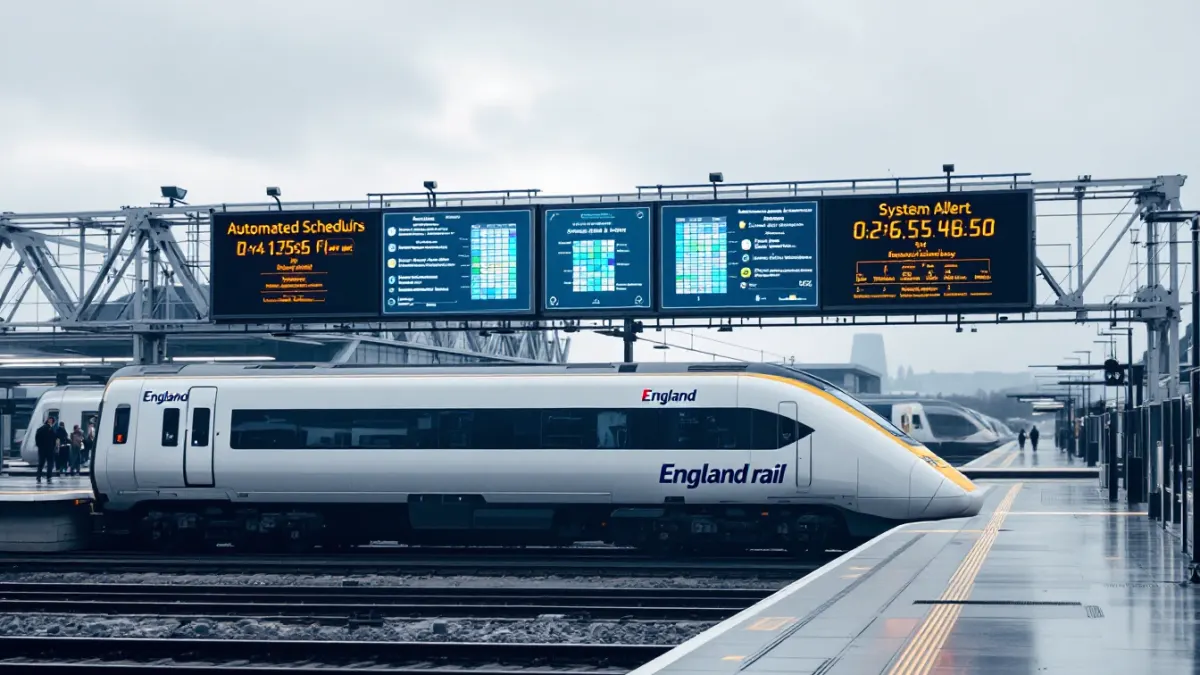Why England's Rail Fare Freeze Is a Strategic Shift in Regulation

Annual rail fare hikes have been standard for 30 years across England. The government just announced a historic freeze on regulated fares including season tickets and off-peak returns in 2026.
This move isn’t just a temporary consumer relief—it marks a fundamental shift in how transport pricing systems create leverage. England's fare freeze rewires the constraints shaping public transit costs and demand dynamics.
For operators and investors, this signals a new era where cost control requires system redesign, not just reacting to inflation. Price ceilings with no automatic rise force new efficiency mechanisms into play.
Leveraging regulatory constraints reshapes execution from price increases to operational innovation.
Why Fare Freezes Aren’t Just Cost-Cutting
Conventional wisdom treats government fare freezes as blunt cost-containment tools. Analysts predict short-term profitability hits without big strategic upside.
That analysis misses the constraint repositioning happening in England’s rail market. Instead of capping costs arbitrarily, the freeze forces operators to extract efficiencies through automation, scheduling optimization, and network leverage.
Unlike markets like the United States which often allow fare increases to cover inflation, England now imposes a ceiling that eliminates price as a relief valve. Similar to automation systems that eliminate repetitive tasks, this freeze pushes the rail infrastructure to operate smarter under fixed pricing.
Replacing pricing flexibility with operational discipline is constraint repositioning, not just cost control.
The Unique Mechanism of England’s Regulated Fare System
Regulated fares—like season tickets and off-peak returns—account for a substantial share of rail revenue. By freezing these fares for the first time in three decades, the government institutes a multi-year fixed pricing environment.
This contrasts with unregulated fares or markets where prices rise annually, shifting costs onto customers. Instead, operators must improve asset utilization, reduce downtime, and automate ticketing and customer experience.
Comparatively, countries like Germany allow gradual fare increases linked to inflation, whereas England’s freeze creates an artificial ceiling that is a system-level constraint. It compels the rail industry to unlock leverage through technology, capacity planning, and workforce multitasking strategies.
This constraint repositioning is akin to how companies use resource optimization to do more with less—except here, the leverage comes from regulatory design, not internal process tweaks.
What Operators and Investors Must Watch Next
The critical constraint has shifted from pricing freedom to operational efficiency. Rail operators that automate scheduling and reduce overhead will gain a competitive edge in a no-price-rise environment.
Investors should read this as a signal for technology-driven rail operators to scale fast and outcompete incumbents reliant on fare inflation. This also sets a template for other regulated markets globally, such as France or Australia, to realign pricing systems with operational leverage demands.
Rail fare freezes don’t just save money—they transform how leverage is engineered under regulation.
Related Tools & Resources
The shift toward operational efficiency and automation in England's rail system highlights the need for disciplined process management. For teams aiming to implement standardized procedures and drive operational innovation under fixed pricing constraints, tools like Copla provide a straightforward way to document, manage, and optimize workflows—helping rail operators and other businesses unlock new leverage through clearer operational execution. Learn more about Copla →
Full Transparency: Some links in this article are affiliate partnerships. If you find value in the tools we recommend and decide to try them, we may earn a commission at no extra cost to you. We only recommend tools that align with the strategic thinking we share here. Think of it as supporting independent business analysis while discovering leverage in your own operations.
Frequently Asked Questions
Why has England implemented a rail fare freeze in 2026?
England has introduced a historic freeze on regulated rail fares in 2026, including season tickets and off-peak returns, to create a multi-year fixed pricing environment that forces rail operators to enhance operational efficiency rather than rely on fare increases.
How does a rail fare freeze impact public transit costs and demand?
The fare freeze rewires the constraints shaping public transit costs by eliminating price as a relief valve, compelling operators to improve asset utilization, automate processes, and optimize scheduling, thus influencing cost structures and demand dynamics.
What operational changes are rail operators expected to make due to the fare freeze?
Operators must adopt automation, scheduling optimization, and network leverage strategies to extract efficiencies, reduce downtime, and enhance the customer experience, thereby compensating for the inability to raise prices annually.
How do England's regulated fares compare with other countries?
Unlike England's fixed multi-year fare freeze, countries like Germany allow gradual fare increases linked to inflation, making England's approach a unique system-level constraint that promotes operational innovation under fixed pricing.
What does constraint repositioning mean in the context of rail fare regulation?
Constraint repositioning involves replacing pricing flexibility with operational discipline, forcing rail operators to focus on efficiency and innovation rather than cost-cutting by fare increases, thus reshaping how leverage is engineered in the system.
Why is technology important for rail operators under England's fare freeze?
Technology, such as automation and capacity planning tools, is crucial to helping operators unlock leverage by improving efficiency, scaling operations, and managing fixed prices without sacrificing service quality or profitability.
How might investors view the fare freeze in terms of rail market opportunities?
Investors see the fare freeze as a signal to back technology-driven rail operators who can scale rapidly and outcompete incumbents that rely on inflation-driven fare increases, indicating a shift toward operational and technological leverage.
Are there examples of tools that help manage operations under fixed pricing constraints?
Tools like Copla provide rail operators and other businesses with ways to document, manage, and optimize workflows, enabling disciplined process management and operational innovation in a no-price-rise environment.

